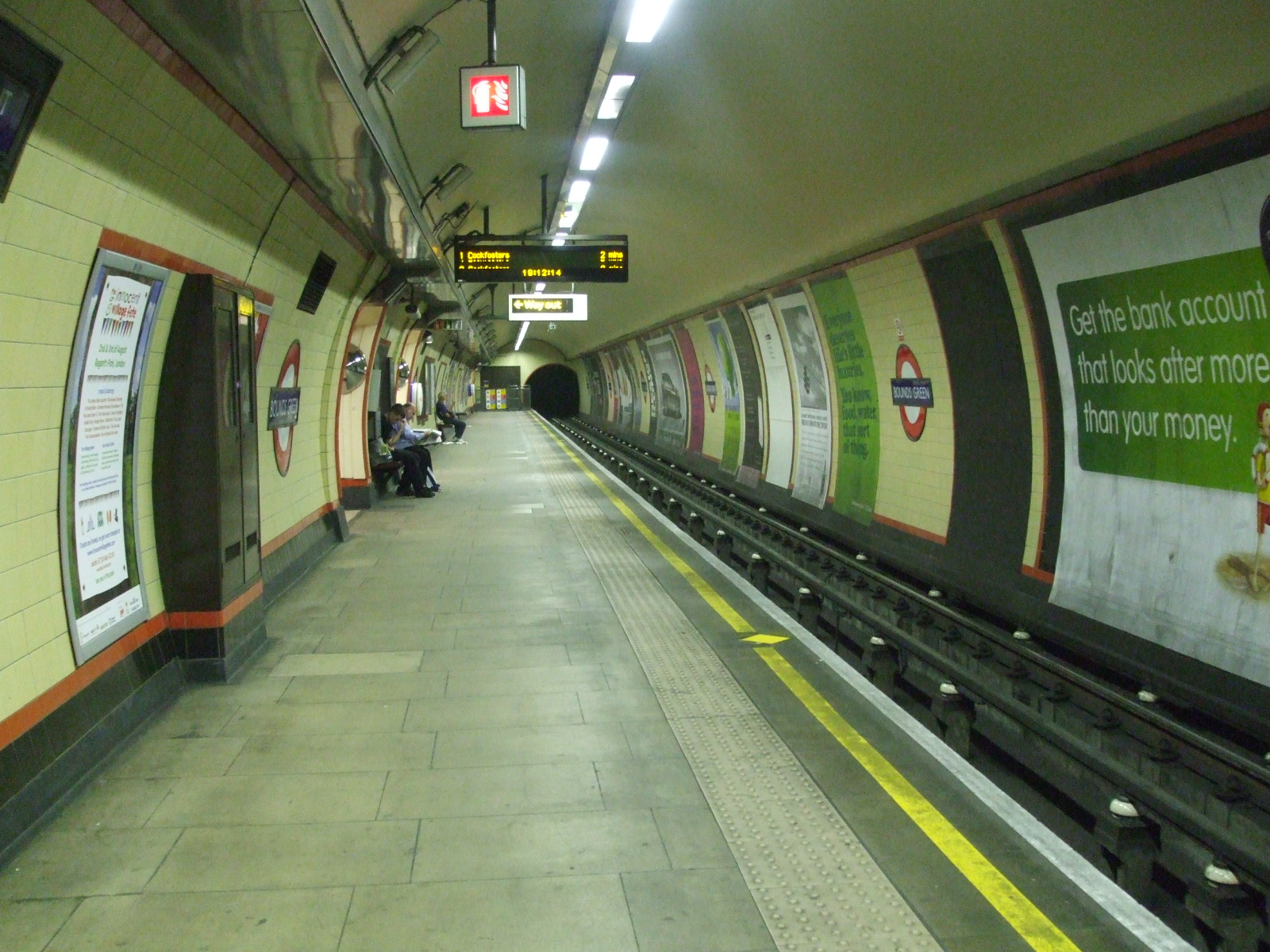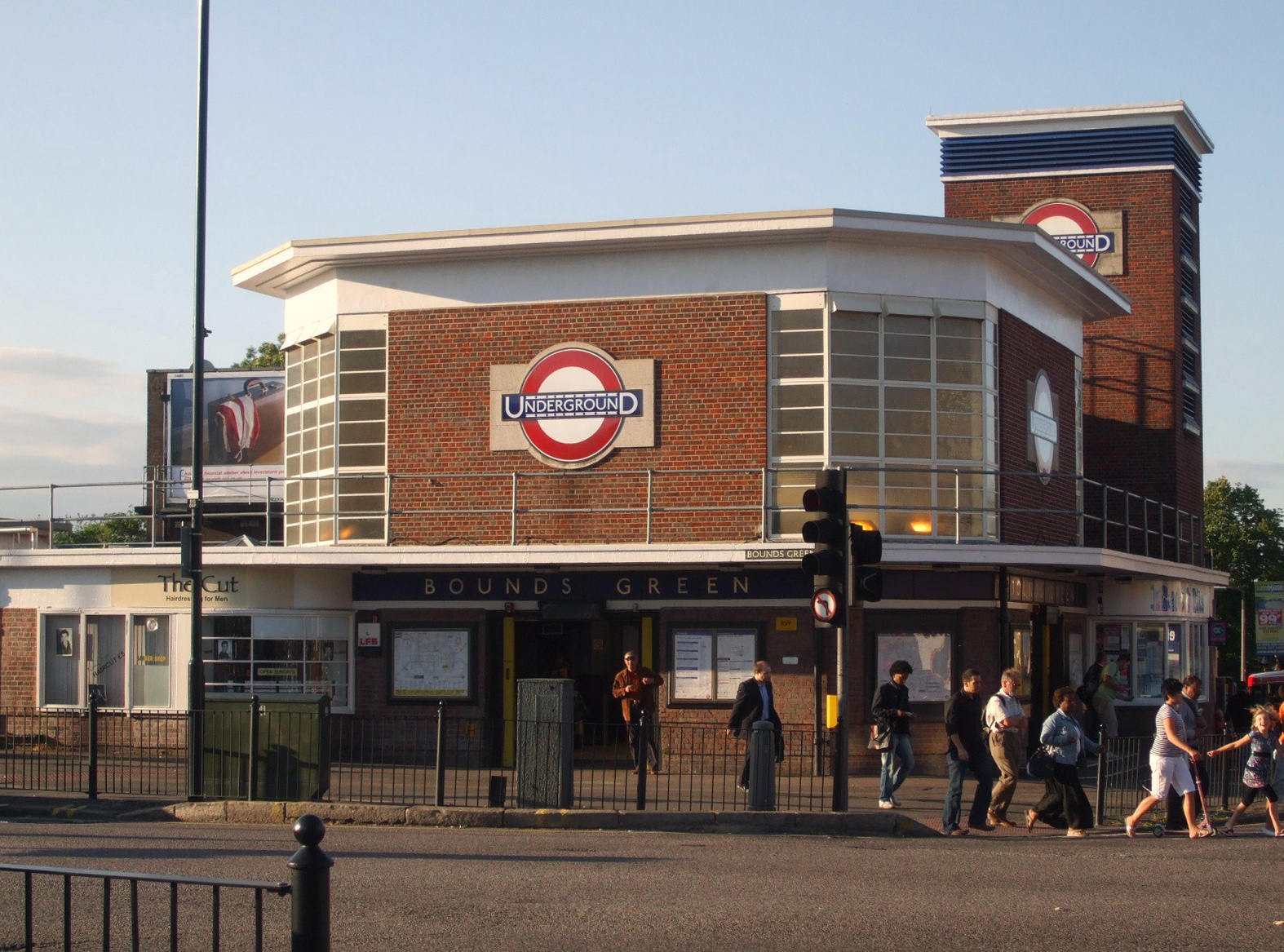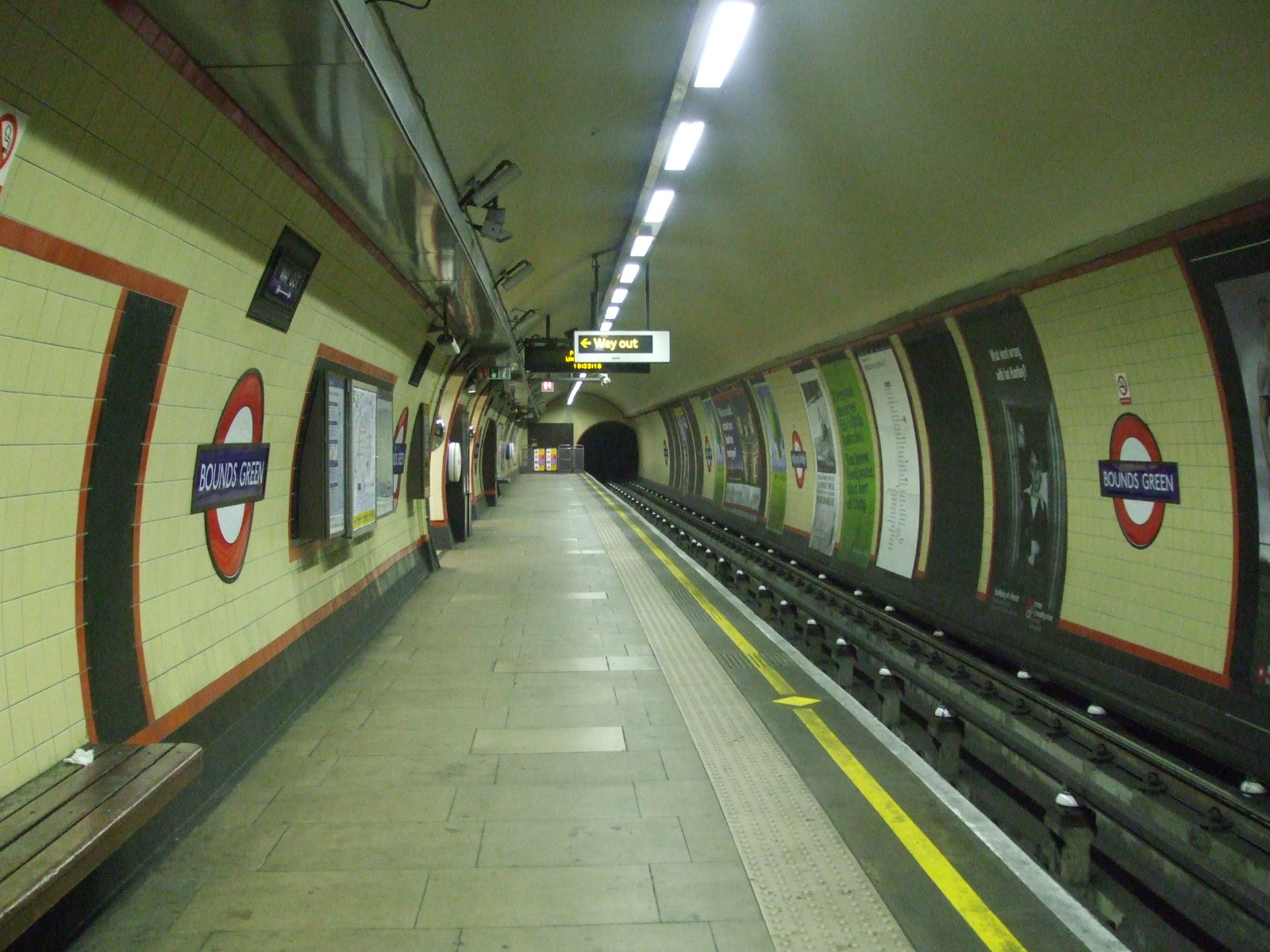Like all stations on the Cockfosters extension, Bounds Green station, which opened on 19 September 1932, set new aesthetic standards, not previously seen on London's Underground. During the planning period of the extension to Cockfosters, alternate names for this station, "Wood Green North" and "Brownlow Road" were considered but rejected. The station was used as an air-raid shelter and people slept on the stairs between the escalators here as well as on the platforms. On the night of 13 October 1940, during The Blitz, a lone German aircraft dropped a single bomb on houses to the north of the station. The destruction of the houses caused the north end of the westbound platform tunnel to collapse, killing or injuring many people amongst those sheltering from the air raid. The train service was disrupted for two months.
Architecturally, this tube station, designed in the typical "Box-style" of the architect Charles Holden by his colleague C. H. James, is a well-preserved example of the modernist house style of London Transport in the 1930s. The octagonal frontage is flanked by a ventilation tower. The octagonal ticket hall is lit by four large windows with an imposing lattice of concrete beams in the ceiling; large London Underground roundels; and original bronze signs, ventilation grilles and information panel frames. The sub-surface areas of the station are finished in biscuit-coloured tiles lined with red friezes. Two escalators take passengers from the ticket hall down to the platforms with a central fixed stairway. The construction of "suicide pits" between the rails was also innovative; these were built in connection with a system of passageways under the platforms to give access to the track. The station has wi-fi, help points and escalators.
Connections: London Bus routes 102, 184, 221 and 299 and night route N91 serve the station.


